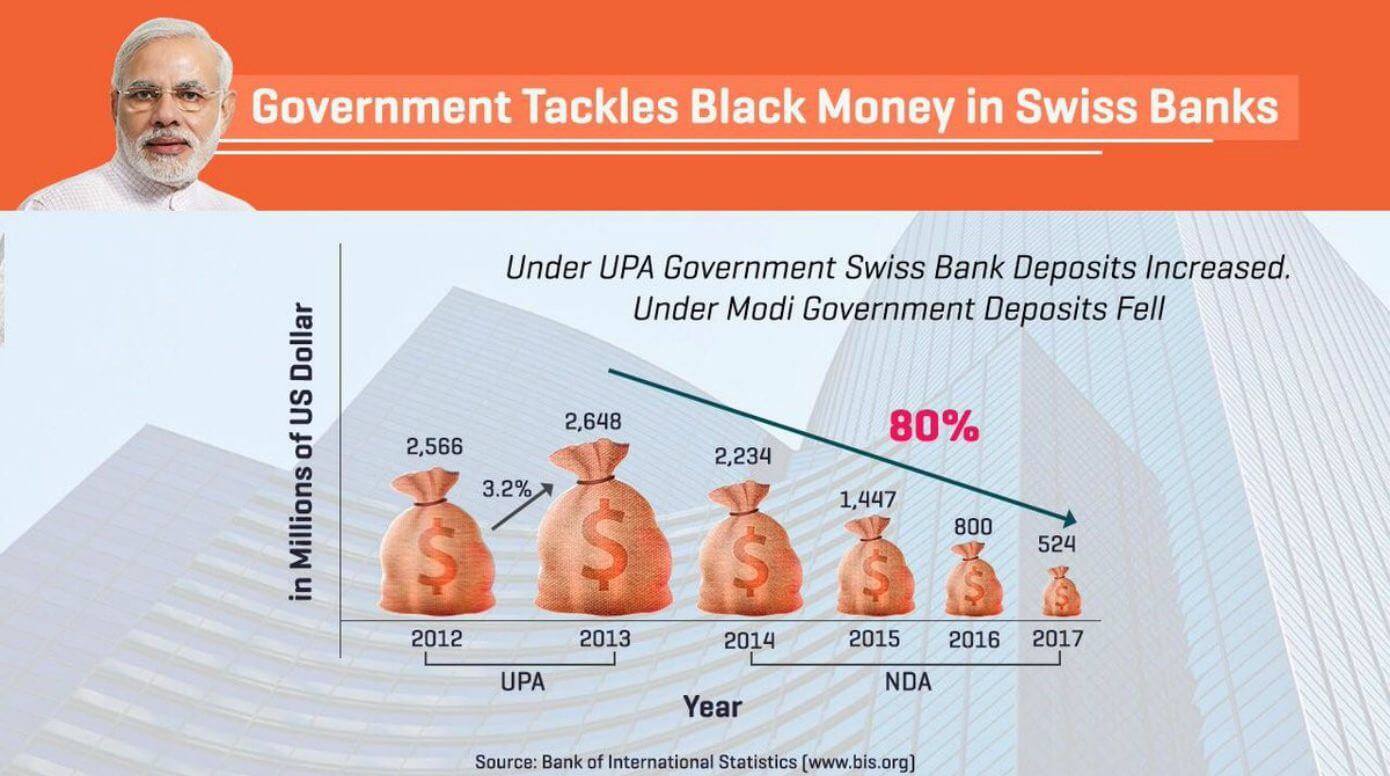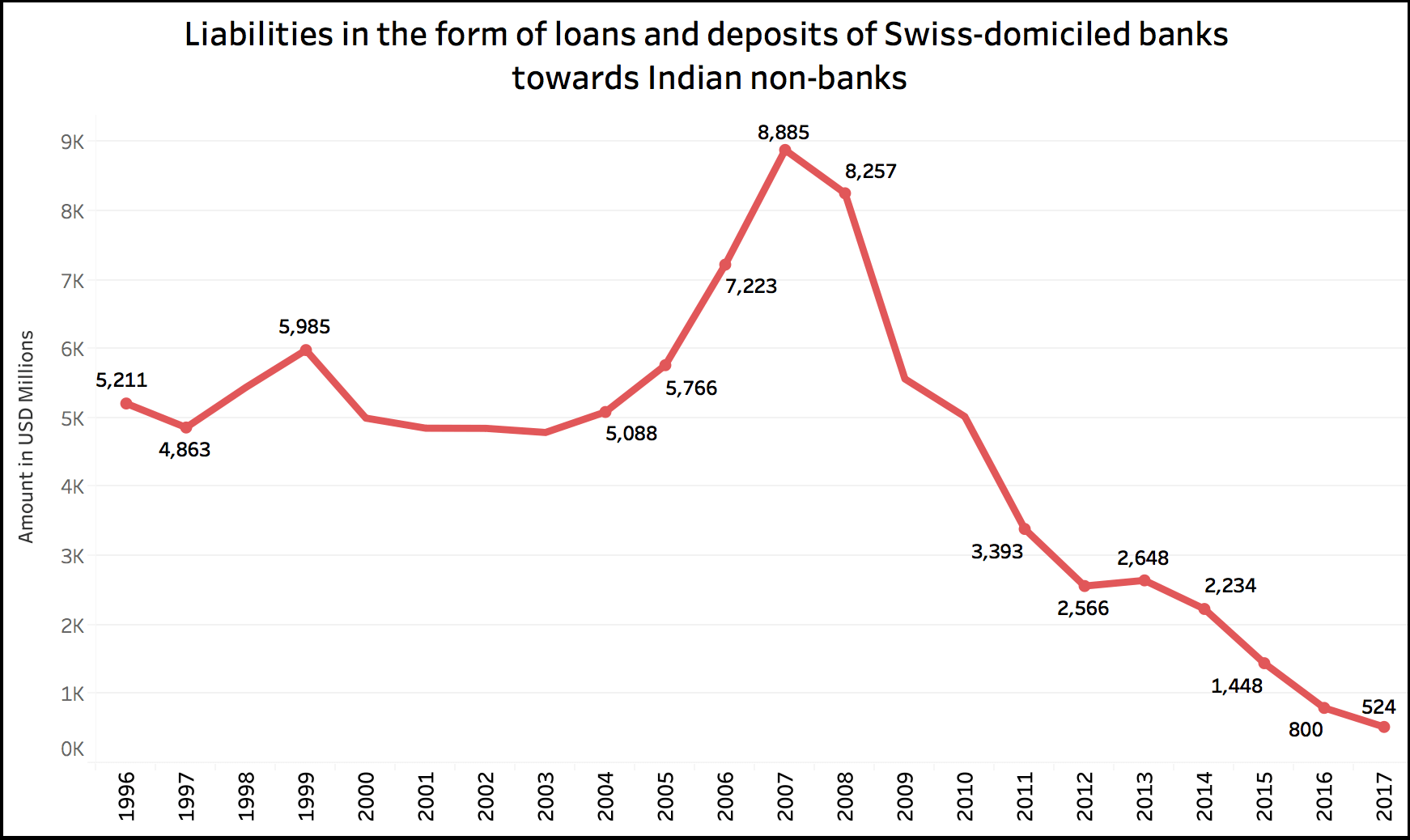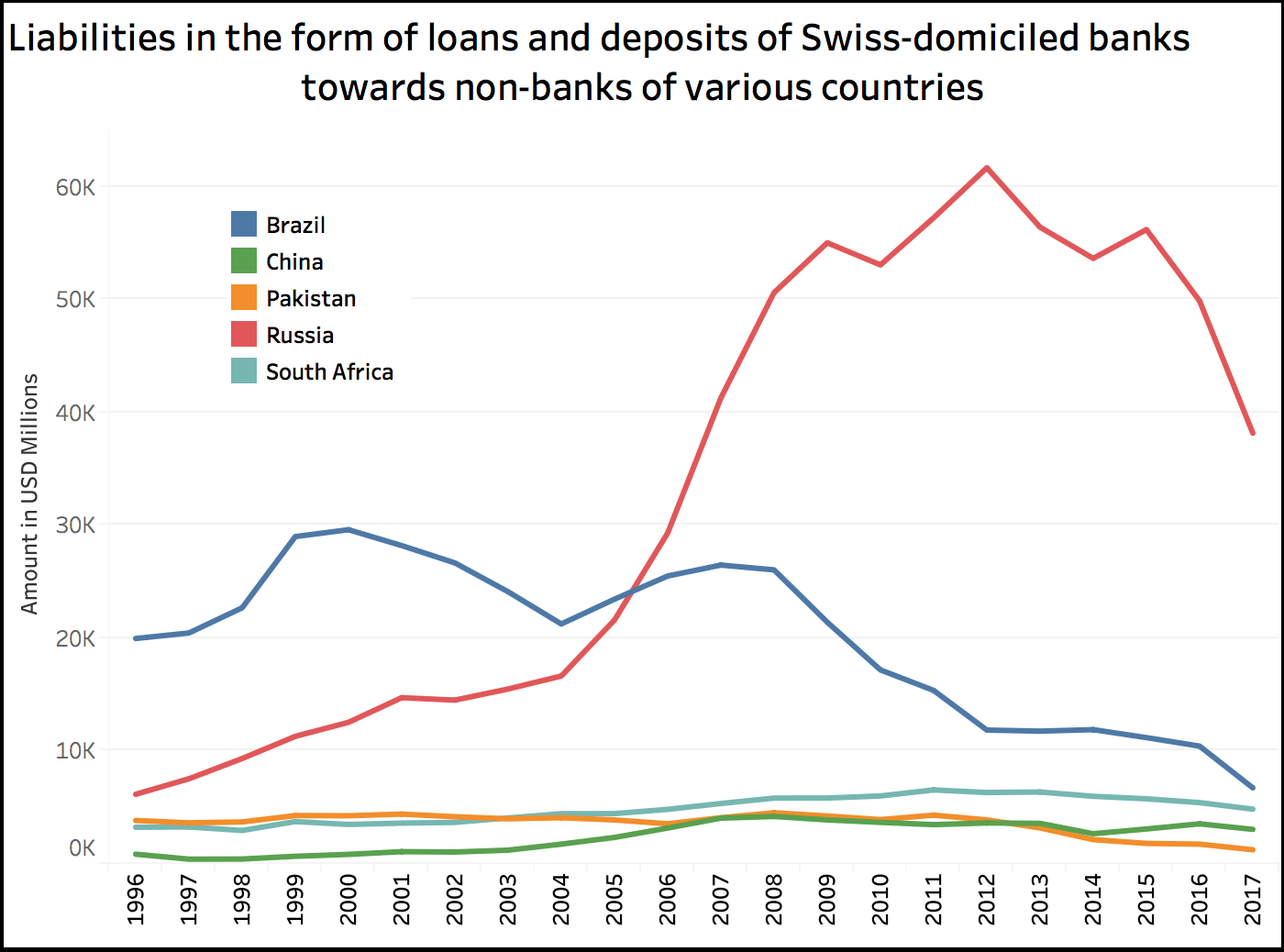[orc]The government claimed that Swiss Bank deposits by Indians decreased during the current government while they increased during the UPA regime. Here is a Fact Check.
In June this year, media reported that the deposits by Indians in Swiss Banks have increased by over 50% in 2017. This was apparently based on the official annual data released by the Swiss National Bank (SNB). But on 24 July 2018, the Swiss embassy released a press statement stating the following.
“The figures published by the SNB are regularly mentioned in the public domain as a reliable indicator of the amount of assets held with Swiss financial institutions in respect of Indian residents. More often than not, the reports have not taken account of the way the figures have to be interpreted, which has resulted in misleading analyses. Moreover, it is frequently assumed that any assets held by Indian residents in Switzerland are undeclared (so-called ‘Black Money’).
However, the cited figures that show an increase of 50% in Swiss banks’ total liabilities towards India also include non-deposit liabilities as well as business of Swiss branches located in India.
To analyze Indian residents’ deposits held in Switzerland, another data source should be used. This is the so-called “locational banking statistics”, which the SNB collects in collaboration with the Bank for International Settlements (BIS). This data source shows that the liabilities in the form of loans and deposits of Swiss-domiciled banks towards Indian non-banks decreased by 44% between 2016 and 2017.”
In other words, the Swiss embassy made it clear that the figures released by the SNB may not be right ones to understand deposits of Indian residents in Swiss financial institutions. It states that the ‘locational banking statistics’, collected in collaboration with the Bank for International Settlements (BIS) should be used to analyse deposits of Indians in Swiss banks.
What are Locational Banking Statistics?
The ‘locational banking statistics’ are released quarterly by the Bank for International Settlements (BIS). The BIS is owned by 60 central banks representing countries around the world. The Reserve Bank of India (RBI), SNB and other major central banks are members of BIS.
As per the methodology available on the BIS website, ‘the locational banking statistics (LBS) were designed to provide comprehensive and consistent quarterly data on international banking business conducted in the countries and other financial centres making up the LBS reporting area. The basic organising principle underlying the reporting requirements is the residence of the reporting banking office’. In other words, the statistics are released on the principle of the location of the reporting bank and the location of the counterpart. In India’s case, the reporting country is Switzerland and the counterpart is India.
What is the government claiming?
In response to a question by Congress’s Anand Sharma in the Rajya Sabha, the government referred to the press release of the Swiss embassy and claimed that ‘the loans and deposits of Indians, other than Banks, in the Swiss banks decreased by 34.5% in the year 2017 as compared to 2016. Further, there has been significant reduction in Swiss non-bank loans and deposits of Indians by 80.2% between 2013 and 2017.’ The BJP also tweeted with an infographic on the same issue that claimed such a decrease in the deposits of Indians.
Have deposits by Indians in Swiss banks decreased?
Going by the data on ‘locational banking statistics’ as referred to by the Swiss embassy, the liabilities in the form of loans and deposits of Swiss-domiciled banks towards Indian non-banks have been decreasing for a while now. The liabilities in the form of loans and deposits are usually used as a proxy for deposits by residents of various countries in the Swiss financial institutions.
The data from the BIS is available from the year 1996. Going by this data, the liabilities of Swiss banks towards Indian non-banks had reached a peak of USD 8885 million in the year 2007, just before the global financial crisis. But following the global financial crisis, these liabilities had continuously decreased ever since except in the year 2013 when they increased marginally. It is true that between 2014 & 2017, the liabilities have decreased by more than 75%. But this is only half the picture. The infographic uploaded by the BJP conveniently uses only 2012 & 2013 as the comparison. If one were to go by the respective periods of rule by the various governments, between 2009 & 2013 (during UPA 2), the liabilities decreased by more than 50%. In fact, from a peak of USD 8885 million in 2007, the liabilities decreased by over 70% in the year 2013.
Fact Check: It is true that between 2014 & 2017, when the BJP is in power, the liabilities have decreased by more than 75%. But this is only half the picture. The infographic uploaded by the BJP conveniently uses only 2012 & 2013 as the comparison. If one were to go by the respective periods of rule by the various governments, between 2009 & 2013 (during UPA 2), the liabilities decreased by more than 50%. In fact, from a peak of USD 8885 million in 2007, the liabilities decreased by over 70% in the year 2013. Hence the claim is only PARTLY TRUE since the liabilities also decreased during the UPA regime.
Are these liabilities ‘Black Money’?
Automatic exchange of information (AEOI) in tax matters between Switzerland & India has come into force from 1 January 2018. The Indian authorities will receive detailed information of all Indian residents that maintain an account in Swiss financial institutions starting September 2019. It cannot be concluded if all of this is black or unaccounted money. The legal foundations for introducing the AEOI came into force on 1 January 2017 in Switzerland. To date, Switzerland has activated AEOI with 38 different countries including India.
What about other Countries?
If one looks at the data on liabilities for other countries, it follows a similar decreasing trend though not on the same scale as India. Between 2014 & 2017, the liabilities towards non-banks in Brazil decreased by 43% and towards non-banks in Pakistan decreased by 42%. The decreasing trend is seen in most of the countries following the global financial crisis in 2008. In the case of Russia, where the liabilities increased even after 2008 to reach a peak in 2012, a 29% decrease was observed between 2014 & 2017. The decrease in India’s case doesn’t seem to be isolated.



4 Comments
Finally Some Result Of demonetisation
Have you even read the article? Every day I come across folks who parrot their belief Even if it’s a lie. They think they are being patriotic but they are just being slavish.
I have long admired Factly. For some reason I stopped receiving your emails and then got one again today. I have also just made a small contribution to Factly as a token of support. Insofar as this article on money in Swiss accounts is concerned, I think it misses out on how advanced people are in money laundering. A recollection of the “Panama Papers” expose will confirm that. I therefore think that the statistics published here may not be relevant at best and misleading at worst at least insofar as a determinant of the efficacy of black money controls and/or demonetisation. Politicians use irrelevant truths and half-truths to support their views and this case, Factly may not have really come up with much of an analysis. What factly did do well, and which is consistent with the honesty I have come to expect from Factly, is that Factly pointed out that the numbers are not what they necessarily seem. Keep at it.
Very clear and concise information. I liked the fact that you clarified all Swiss bank deposit isn’t black money as per the popular belief among indians.
A question – would you do a article on how effective government spending on infra has been. It’s touted as a magic bullet but I don’t think India’s infra has generated RoI for users as claimed. Logistics, airlines and transporters wouldn’t be shutting down if so.